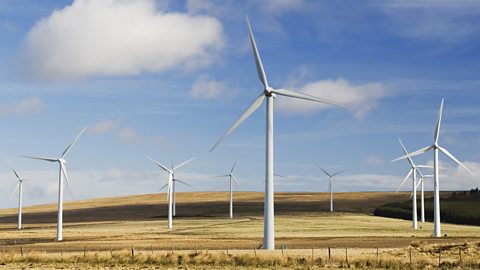Key facts
Nuclear power produces a lot of energy from nuclear fuel in a controllable and reliable reaction.
Nuclear fuel is a finite resourceResource that is in limited supply. It will eventually run out due to us using it. so it is not a renewable Something that does not run out when used. source of energy.
It does not produce carbon dioxide or other greenhouse gases, so it does not contribute directly to global heating. Some people consider it is a good alternative to non-renewableNatural resources that cannot be replaced after they are used. This means that they exist in a fixed amount on Earth. Fossil fuels such as coal, oil and gas are all non-renewable resources. fossil fuels.
Radiation from nuclear fuel and nuclear waste can be very harmful to living things, so some people think that nuclear fuel is too big a threat to health and the environment to use.

Nuclear energy and its impact
Find out why nuclear power can generate huge amounts of energy and how it is used to generate electricity.
We’re all made up of stuff. Lot’s of tiny stuff called atoms. It turns out that these teeny atoms contain huge amounts of energy. Scientists have figured out how to use these atoms to create energy that can power out homes – it’s called nuclear energy. It’s not a renewable energy source but it is relatively clean and Scotland has two nuclear power plants.
Nuclear energy is created by a reaction called nuclear fission. Now for the science bit. Splitting atoms such uranium or plutonium creates heat – and a lot of it. We do this by firing a neutron at one of these atoms. This splits the atom releasing more neutrons. Lots and lots of neutrons collide with more atoms, releasing more energy and generating more and more heat. This is called a chain reaction.
The heat from all this energy is used to boil water. The steam produced is then used to turn turbines. It’s these turbines that then generate the electricity that power out homes. To help keep the reactors cool they need lots of water, so you will see these power stations close to the sea or large bodies of water.
Nuclear power is a lot cleaner than other power sources as it doesn’t produce greenhouse gases or sulfur dioxide. The reason nuclear power is a non-renewable energy source is that it still needs fuel.
Nuclear energy only needs a small amount of uranium to produce lots of electricity – so you don’t use it up so quickly. Just six grams of nuclear fuel can create the same amount of energy as a tonne of coal. Now that’s serious power!
Once the power plant is set up it is efficient and cheap. However, the set up and decommissioning costs are extremely high. Nuclear also creates a lot of dangerous waste that is radioactive and very harmful to humans. It is usually kept in storage facilities deep underground to contain the radiation it produces. It can take thousands of years before it is safe to dispose of properly.
If there is an accident at a nuclear power plant, radioactive material can escape and devastate the environment for thousands of years.
Nuclear power plants here in Scotland account for 28 percent of our generated energy. The Scottish government wants more energy created by renewable sources such as wind power rather than building more expensive nuclear power plants.
Why do you think nuclear power is still something that is considered?
How nuclear power is generated
Nuclear power stations are similar to traditional power plants because water is heated to turn turbineA turbine is a machine that turns the movement of liquid or gas into energy that can be used. In a simple turbine water or air push against turbine blades and spin them round. The spinning blades turn a long pole called a shaft. The shaft can then turn other pieces of machinery, such as a generator that is used to produce electricity. and generate electrical energy.
However, instead of burning fuels, the uranium atoms (the nuclear fuel) undergo a reaction called nuclear fission which creates the heat.
Nuclear fission
Nuclear fission is when an atomTiny particles that everything in the universe is made from. Different atoms make up different materials, called elements. is split by firing a neutron (very small particle) at it. Splitting an atom releases a large amount of energy in the form of heat.
Nuclear reactors
The main nuclear fuels are uranium and plutonium. These are housed in a nuclear reactor.
- The nuclear fuel undergoes nuclear fission in the reactor, producing heat - nuclear to heat energy.
- Heat is used to change water into steam in the heat exchanger
- The steam drives the turbine - heat to kinetic energy
- This drives the generator to produce electricity - kinetic to electrical energy
Location factors
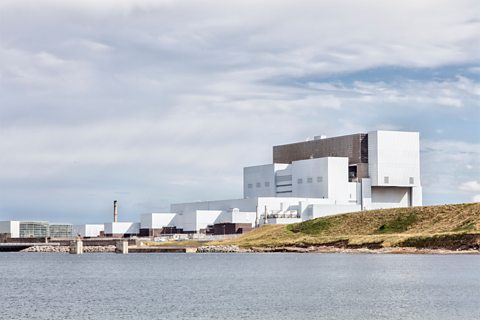
Nuclear power stations need a reliable source of water for cooling and other purposes. They are most often built next to the sea or large lakes.
Radiation can be very harmful to any living thing, including people. For this reason nuclear power stations are located in areas away from towns and cities.
Accidents at nuclear power stations can have devastating results, so they need to be built away from risks of damage by flooding, earthquakes or extreme weather. In 2011, a tsunamiA giant sea wave caused by an underwater earthquake, volcanic eruption or a landslide into the sea. caused a power failure at the Fukushima nuclear power station in Japan. This caused the reactor to overheat, causing a series of explosions and the release of huge amounts of radiation.

Sustainability of nuclear energy
To develop a sustainable future you need to think about meeting today's needs and protecting the environment and resources for the future.
Nuclear power is non-renewable because there is only a finite amount of nuclear fuel in the world. However, only small amounts of nuclear fuel are needed to produce large amounts of energy, so it is not used up as quickly as fossil fuels.
Nuclear power is sustainable in that it does not release greenhouse gases and contribute to global heating. It does release small amounts of radioactive gas and other material but only at very low doses.
It does leave behind nuclear waste which is more radioactive and which needs to be stored deep underground for safety and security.
Advantages and disadvantages of nuclear energy
Advantages
- Nuclear power is cleaner than fossil fuels (greenhouse gasA gas that absorbs heat so that it is trapped in the Earth's atmosphere. Greenhouse gases help keep the Earth warm but increasing amounts of greenhouse gases causes global heating. The main greenhouse gases are water vapour, carbon dioxide and methane such as carbon dioxide or sulphur dioxide are not produced)
- It is very efficient - only a small mass of nuclear fuel is required to generate lots of electricity.
- Although nuclear fuel is non-renewableNatural resources that cannot be replaced after they are used. This means that they exist in a fixed amount on Earth. Fossil fuels such as coal, oil and gas are all non-renewable resources. it is not used up quickly.
- Once set up, running costs are low.
Disadvantages
- Nuclear fuel is non-renewable and will run out eventually
- The cost of set up is very high and so a large amount of money is required initially. The process is takes many years.
- Decommissioning nuclear power stations so they are not an environmental or health threat when no longer in use is also a long and expensive process.
- Some nuclear waste is highly radioactive and must be disposed of carefully. It is usually buried deep underground
- Any accidents can release radiation which is potentially harmful to people and the environment.
Test your knowledge
More on Energy sources and sustainability
Find out more by working through a topic
- count8 of 12
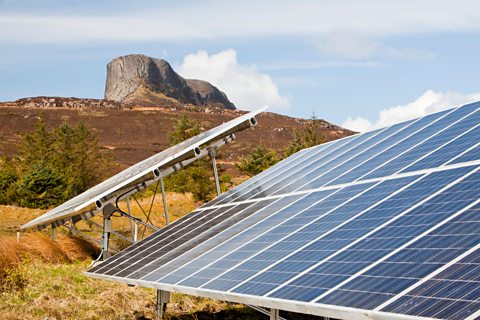
- count9 of 12
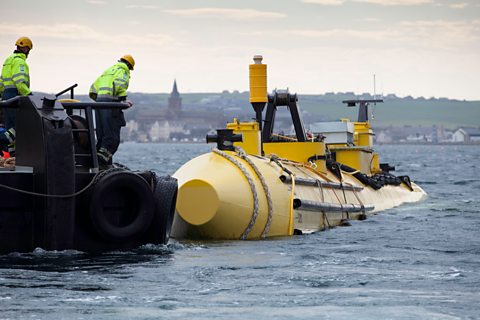
- count10 of 12
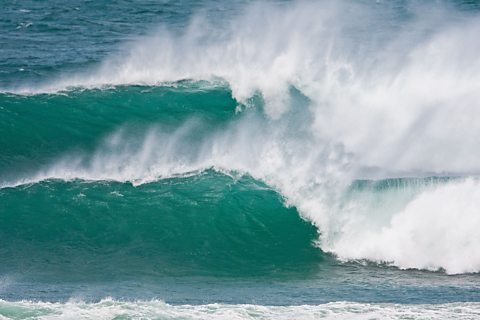
- count11 of 12
